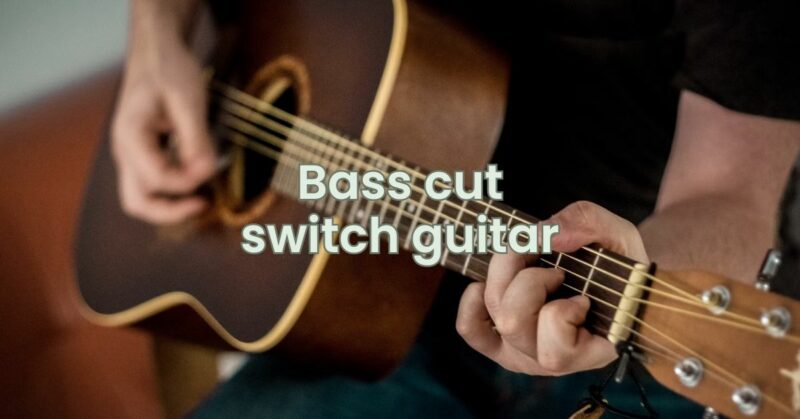Crafting your guitar’s tone involves a delicate balance between various frequencies, allowing you to achieve a sound that’s uniquely yours. One versatile tool that puts tonal control right at your fingertips is the bass cut switch in guitar circuits. In this article, we’ll delve into the concept of the bass cut switch, its role in shaping your sound, and how it empowers you to tailor your tone to suit different playing styles and musical genres.
Understanding the Bass Cut Switch:
The bass cut switch is a feature integrated into guitar circuits that allows players to engage or disengage a specialized tone control circuit. This circuit selectively reduces the bass frequencies in your guitar’s signal, resulting in tonal changes that emphasize treble frequencies and enhance clarity.
Effects of the Bass Cut Switch:
Engaging the bass cut switch yields several tonal effects:
- Bass Reduction: The primary effect is the reduction of low-frequency bass tones, resulting in a cleaner and more articulate sound.
- Articulation: With less bass frequencies in the signal, individual notes become more distinct and defined, enhancing note separation and clarity.
- Treble Emphasis: The bass cut switch shifts the tonal balance towards treble frequencies, providing a brighter and more focused sound.
Applications in Playing:
The bass cut switch finds applications across various playing scenarios:
- Rhythm Guitar: Engaging the bass cut switch can help rhythm guitar parts stand out in a mix by providing clarity to chords and strumming patterns.
- Lead Guitar: When playing lead lines, the bass cut switch enhances note separation, making it an excellent choice for intricate solos.
- Fingerstyle Playing: Fingerstyle guitarists can benefit from the bass cut switch, as it allows individual notes to ring out more clearly, enhancing fingerpicked melodies.
Tonal Versatility:
The bass cut switch offers tonal versatility that suits a variety of musical styles:
- Rock and Blues: Engaging the bass cut switch can yield a bright and articulate sound that suits genres where note definition and clarity are crucial.
- Folk and Acoustic Styles: In genres like folk and acoustic music, the bass cut switch can provide a well-defined and balanced tone that complements fingerpicking and strumming.
- Jazz and Fusion: The bass cut switch can help achieve a clean and precise sound suitable for jazz and fusion genres, where intricate lines and chord voicings are prominent.
Implementation and Modification:
Incorporating a bass cut switch into your guitar involves wiring skills and knowledge of circuitry. If you’re not comfortable with these tasks, seeking the help of a professional guitar technician is recommended.
Conclusion
The bass cut switch is a valuable tool that offers immediate tonal control, enhancing clarity and note definition. By understanding its effects and applications, you can tailor your guitar’s sound to suit your musical expression and playing style. Remember that your guitar’s tone is a canvas for creativity, and with the addition of a well-implemented bass cut switch, you can sculpt a sonic identity that resonates with your musical journey.


